John Hurrell – 20 November, 2009
These works vary in motive from expressions of sorrow for the passing of loved ones or acts of injustice to condemnations of Pakeha ignorance.
Robert Jahnke is well known for his pithy, precisely made and precisely thought-through wall sculptures that deal with post-colonial issues and Māori-Pakeha relations. They often utilize metonymy in the form of enlarged objects (such as tools like stamps or axes) representing government interests or acts of land appropriation.
Although still with a history-focussed literary sensibility, his practice has shifted in recent years away from juxtaposing visual tropes towards analysing writing structures like aphorisms. From an interest in poetry initially explored by Hotere in the late sixties, Jahnke has developed a ‘stencilled’ aphoristic text on black lacquered steel panels – often incorporating repeated intertwined background rose motifs in the manner of the American artist Christopher Wool.
Sweet-smelling roses and sharply piercing thorns are the prevalent written and illustrated motifs in this show, plus one brass bedstead that puns on a ‘bed of roses’ - as well as symbolising the aspired state of (bi)cultural conjugal bliss. With the latter he has put ‘between the sheets’ the conflict-generating Foreshore and Seabed issue about treaty and customary rights – notably the Governmental Ministerial Panel formed last March to review the 2004 F & S Act that overturned Māori claims, and from which a decision is expected at the end of this year.
The Bath St show consists of eleven lacquer on stainless steel works (most are a metre squared) that feature rose, thorn and leaf imagery usually with repeated aphoristic texts. Apart from glossy or matt black the colour symbolism extends from sienna-brown to grey-white for the letters and/or plants, and around the outside of the central oval, and as Jahnke’s clearly worded catalogue says, his non-traditional works (what is termed ‘non-customary’) ‘are Māori-centric in terms of content, and have been created by an artist who has the right to self-identification as Māori.’ This in spite of its use of the rose as an example of ‘ethnic capture of non-Maori imagery’ – something that has been going on since the latter part of the nineteenth century.
These works vary in motive from expressions of sorrow for the passing of loved ones or acts of injustice to condemnations of Pakeha ignorance. The Among Thorns Grow Roses painting series, in six parts, is a specific meditation on the Foreshore and Seabed Act, taken up again with the bedstead and aphorism installation.
Rose imagery, in the form of lead sculpture painted in black lacquer, featured in Jahnke’s last exhibition at Bath St two years ago. What seem to be new in emphasis are the aphorisms. He has two sets of six on the walls each side of the bedstead, which has a densely packed grid of pink fabric roses positioned over a large glowing lightbox.
Looking at the twelve truisms, some seem accurate (“ However long the sun shines upon a thistle it will never be a rose”), some cynical (“Roses fall, thorns remain”), others facile (“Truths and roses have thorns”), and a few derivative (“Strew not roses before swine”). The rose and thorn metaphor seems in Jahnke’s hands to be about the necessity of compromise, like in a marriage relationship. Pain and gain go together.
With his persona, Jahnke projects an earnest, contemplative, very considered sensibility. Nothing impulsive or flippant gets manifested, unlike perhaps some much younger ‘Maori’ artists, like say Wayne Youle, who whilst serious, can also surprise or shock Māori and Pakeha audiences with an exuberantly ‘Poppy’, non-academic approach.
Yet there is a subtly humorous side to Jahnke, that I for one, have never noticed before. The tacky (if not bawdy) brass bedstead is proof of that. Whilst colonial, it must also be tongue-in-cheek – as perhaps also is the dinky, very dated stencilled font and the fact that some words are merged together. This, and the use of colour, seems to be new. Nice move.
Recent Comments
John Hurrell
Yes well Daniel, maybe I was a little over generous. Jahnke is not known for his funny bone, but that ...
Daniel Munn
In terms of pithy text work they don't seem as playful (in the sense of word-play) as Hotere or Wool ...
Luna
I think this body of work is far more interesting than the work of Judy Millar who was chosen to ...
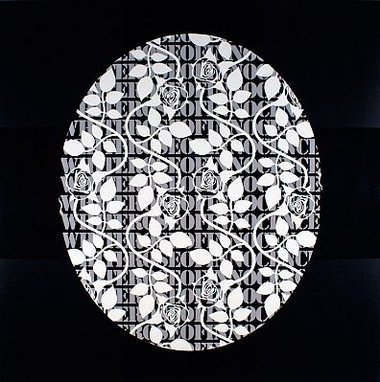
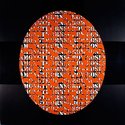
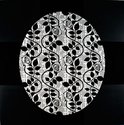
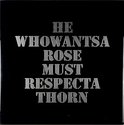

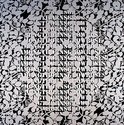
 Two Rooms presents a program of residencies and projects
Two Rooms presents a program of residencies and projects Advertising in this column
Advertising in this column


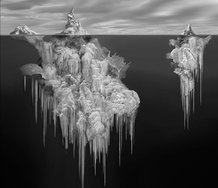
This Discussion has 3 comments.
Comment
Luna, 2:42 p.m. 3 December, 2009 #
I think this body of work is far more interesting than the work of Judy Millar who was chosen to represent New Zealand in Venice. Perhaps the committee ought to look at Robert Jahnke for the next Bienalle - it would be taking a small step backwards and a huge one forwards.
Daniel Munn, 2:42 p.m. 3 December, 2009 #
In terms of pithy text work they don't seem as playful (in the sense of word-play) as Hotere or Wool or Holzer or Kosuth etc. Although "Respecta" does look quite strange.
John Hurrell, 2:42 p.m. 3 December, 2009 #
Yes well Daniel, maybe I was a little over generous. Jahnke is not known for his funny bone, but that brass bedstead is so tacky, it is hard to imagine him being totally serious about it.
Participate
Register to Participate.
Sign in
Sign in to an existing account.